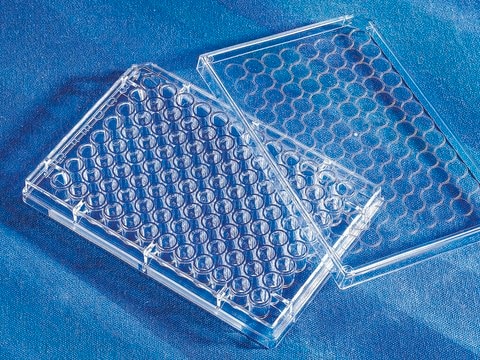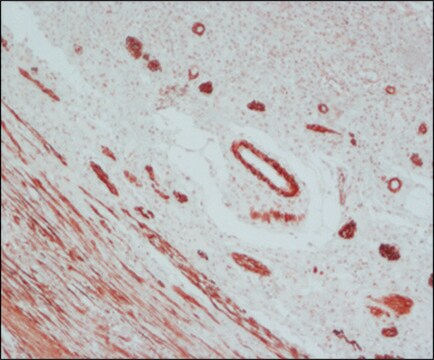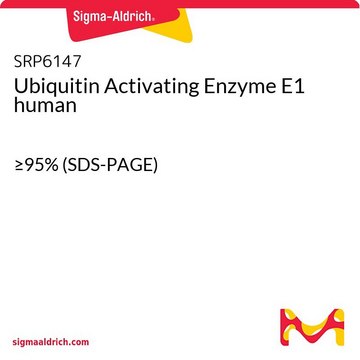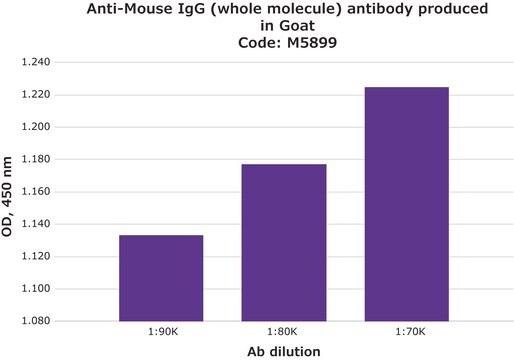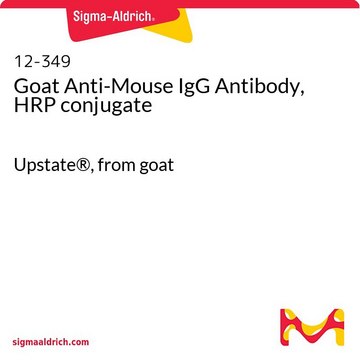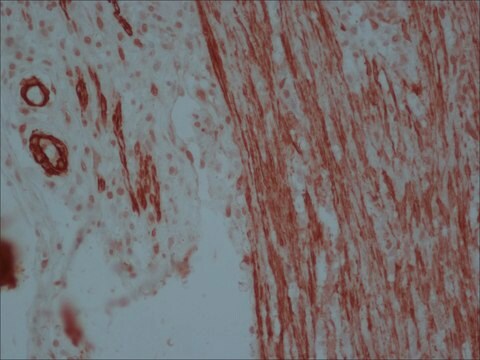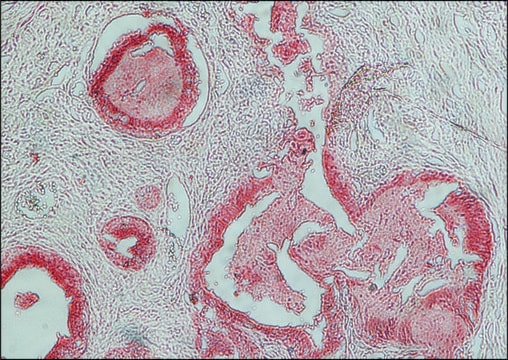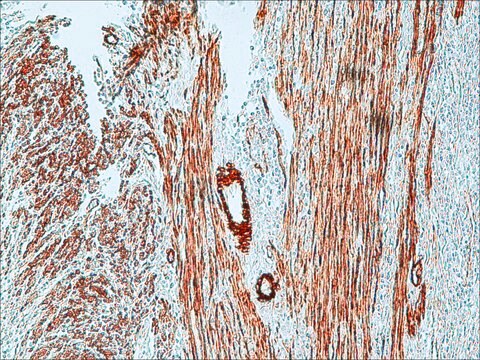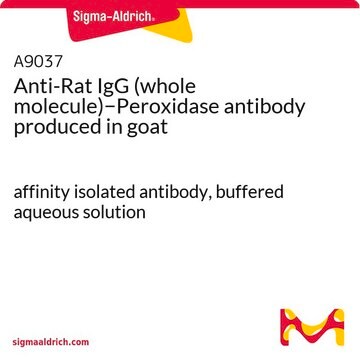A8924
Anti-Mouse IgG (whole molecule)–Peroxidase antibody produced in goat
affinity isolated antibody, buffered aqueous solution
Synonym(s):
Goat Anti-Mouse IgG (whole molecule)–Peroxidase
Sign Into View Organizational & Contract Pricing
All Photos(1)
About This Item
Recommended Products
biological source
goat
Quality Level
conjugate
peroxidase conjugate
antibody form
affinity isolated antibody
antibody product type
secondary antibodies
clone
polyclonal
form
buffered aqueous solution
species reactivity
mouse
should not react with
rat
technique(s)
direct ELISA: 1:10,000
shipped in
dry ice
storage temp.
−20°C
target post-translational modification
unmodified
Looking for similar products? Visit Product Comparison Guide
General description
Immunoglobulin G (IgG) is a glycoprotein antibody that regulates immune responses such as phagocytosis and is also involved in the development of autoimmune diseases. Mouse IgGs have four distinct isotypes, namely, IgG1, IgG2a, IgG2b, and IgG3. IgG1 regulates complement fixation in mice.
Goat Anti-Mouse IgG (whole molecule)-Peroxidase antibody binds to mouse IgG and does not react with rat serum proteins.
Goat Anti-Mouse IgG (whole molecule)-Peroxidase antibody binds to mouse IgG and does not react with rat serum proteins.
Immunogen
Purified mouse IgG (whole molecule)
Application
Anti-Mouse IgG (whole molecule)-Peroxidase antibody produced in goat may be used a secondary antibody in a direct ELISA, where the detection antibody is of mouse origin.
Goat Anti-Mouse IgG (whole molecule)-Peroxidase antibody has been used for ELISA (1:10,000) and immunoblot (1:2,500) analyses.
Other Notes
Antibody adsorbed with rat serum proteins.
Physical form
Solution in 0.01 M phosphate buffered saline, pH 7.4, containing 1% bovine serum albumin with preservative.
Preparation Note
A8924 anti-mouse IgG (whole molecule) peroxidase conjugate is an affinity isolated goat polyclonal antibody and was adsorbed with rat serum proteins.
Disclaimer
Unless otherwise stated in our catalog or other company documentation accompanying the product(s), our products are intended for research use only and are not to be used for any other purpose, which includes but is not limited to, unauthorized commercial uses, in vitro diagnostic uses, ex vivo or in vivo therapeutic uses or any type of consumption or application to humans or animals.
Not finding the right product?
Try our Product Selector Tool.
Signal Word
Warning
Hazard Statements
Precautionary Statements
Hazard Classifications
Aquatic Chronic 3 - Skin Sens. 1
Storage Class Code
12 - Non Combustible Liquids
WGK
WGK 2
Flash Point(F)
Not applicable
Flash Point(C)
Not applicable
Choose from one of the most recent versions:
Already Own This Product?
Find documentation for the products that you have recently purchased in the Document Library.
Customers Also Viewed
Kirill Skomorovski et al.
British journal of haematology, 123(4), 683-691 (2003-11-18)
Thrombopoietin (TPO) immunogenicity hampers its development as a therapeutic agent for attenuating thrombocytopenia and improving platelet harvest in donors. This work was aimed at validating, in mouse and in monkey experiments, a thrombopoiesis computer-model prediction that platelet counts, similar to
Stefania Capone et al.
Journal of virology, 80(4), 1688-1699 (2006-01-28)
Success in resolving hepatitis C virus (HCV) infection has been correlated to vigorous, multispecific, and sustained CD8(+) T-cell response in humans and chimpanzees. The efficacy of inducing T-cell-mediated immunity by recombinant serotype 5 adenovirus vector has been proven in many
Shufeng Zhou et al.
Development (Cambridge, England), 142(19), 3294-3306 (2015-10-08)
Cone photoreceptors are required for color discrimination and high-resolution central vision and are lost in macular degenerations, cone and cone/rod dystrophies. Cone transplantation could represent a therapeutic solution. However, an abundant source of human cones remains difficult to obtain. Work
Young Eun Choi et al.
The Journal of biological chemistry, 284(19), 12772-12782 (2009-03-05)
Inhibitor of apoptosis (IAP) proteins are widely expressed throughout nature and suppress cell death under a variety of circumstances. X-linked IAP, the prototypical IAP in mammals, inhibits apoptosis largely through direct inhibition of the initiator caspase-9 and the effector caspase-3
Lukas Bossaller et al.
Journal of immunology (Baltimore, Md. : 1950), 197(4), 1044-1053 (2016-06-30)
Systemic lupus erythematosus (SLE) is a chronic, life-threatening autoimmune disorder, leading to multiple organ pathologies and kidney destruction. Analyses of numerous murine models of spontaneous SLE have revealed a critical role for endosomal TLRs in the production of autoantibodies and
Our team of scientists has experience in all areas of research including Life Science, Material Science, Chemical Synthesis, Chromatography, Analytical and many others.
Contact Technical Service







